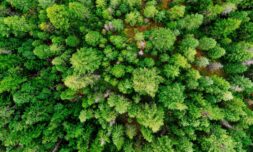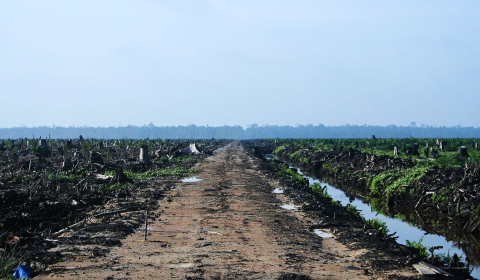An alarming new assessment has revealed that the number of threatened trees now outweighs all threatened birds, mammals, reptiles and amphibians put together.
According to the IUCN’s Red List of Threatened Species, a third of the world’s trees are now at risk of extinction.
This number is more than double that of all threatened birds, mammals, reptiles, and amphibians combined and has experts seriously concerned about what it means for the future.
In all, 38 per cent of trees are at risk, approximately 16,425 of the 47,282 species assessed by the IUCN.
This is the case in 192 countries, with clearing land for farming and logging the biggest threat and – in temperate regions – pests and diseases.
The news was unveiled in Colombia, where world leaders gathered for COP16, the UN biodiversity summit dedicated to measuring progress on a landmark rescue plan for nature.
‘This comprehensive assessment presents the first-ever global picture of the conservation status of trees,’ said Dr Malin Rivers, global tree assessment lead at Botanic Gardens Conservation International.
‘The work is a global effort, with over 1,000 tree experts involved. We must continue to work together to scale up local, national and international tree conservation action to support people and the planet.’
As a defining element of many ecosystems, the loss of trees poses a major threat to thousands of other plants, fungi, and animals – including us.
Trees are fundamental to life on Earth, playing a crucial role in carbon, water, and nutrient cycles, as well as soil formation and climate regulation (namely soaking up the greenhouse gas emissions we can’t seem to stop generating).
‘The significance of the Global Tree Assessment cannot be overstated, given the importance of trees to ecosystems and people,’ said Dr Eimear Nic Lughadha, senior research leader in conservation assessment and analysis at the Royal Botanic Gardens, Kew.
‘We hope this frightening statistic of one in three trees facing extinction will incentivise urgent action and be used to inform conservation plans.’
The IUCN hopes that this new assessment can be used as a unique tool to help guide action to reverse the decline of nature.
‘There is no excuse not to act,’ said Jean-Christophe Vié, director general of Fondation Franklinia which funded most of the Global Tree Assessment.
‘The way reforestation is done needs to be greatly improved, diversifying species and including threatened ones in tree-planting schemes.’
‘Governments and their forestry departments, companies and all those planting trees could easily do this and get positive impact quickly, tackling both the climate change and biodiversity crises.’

















